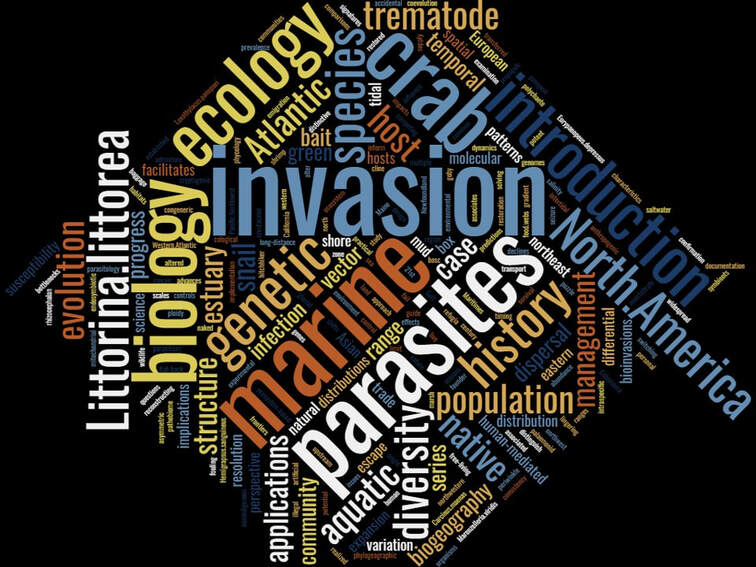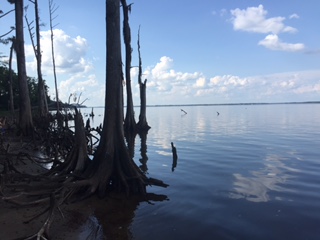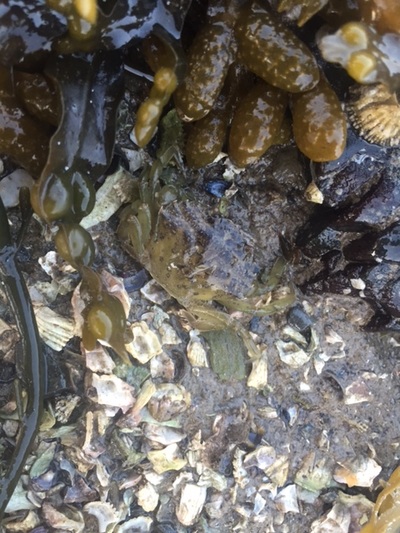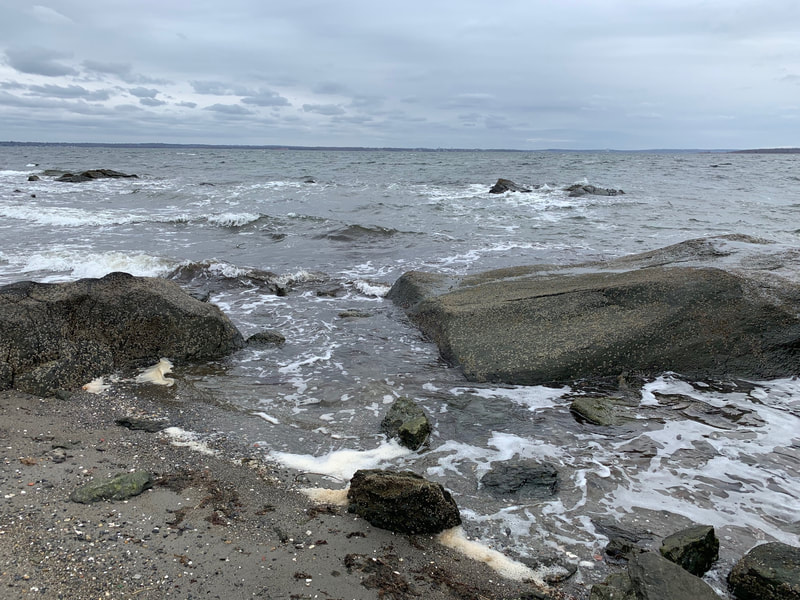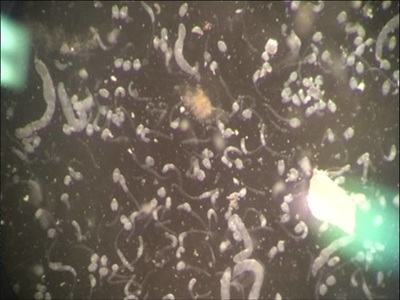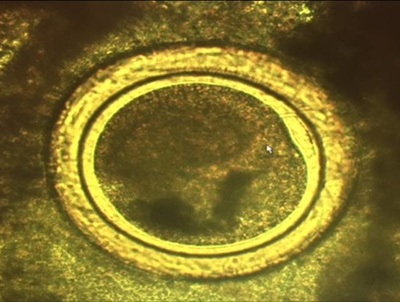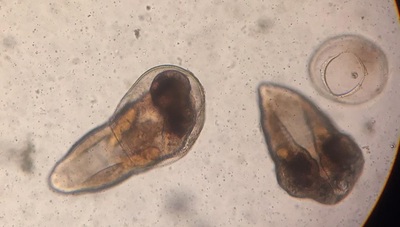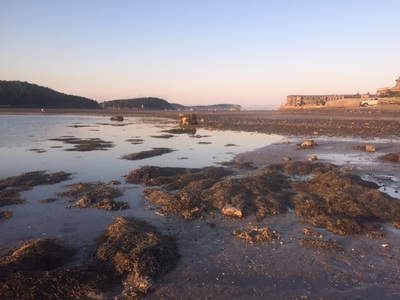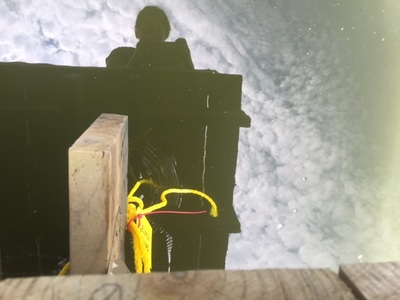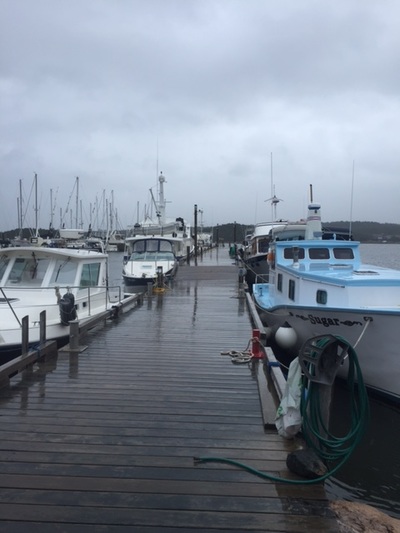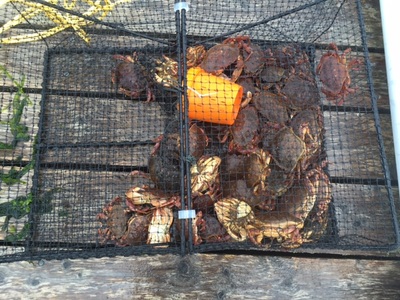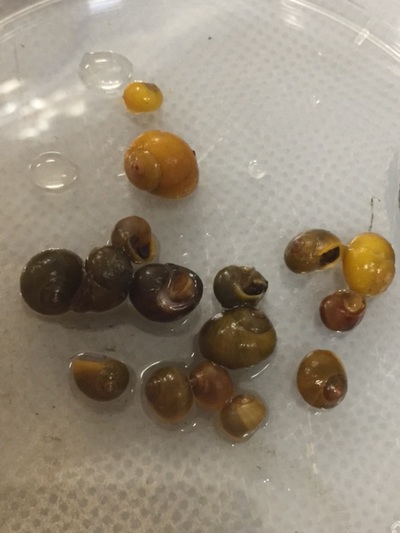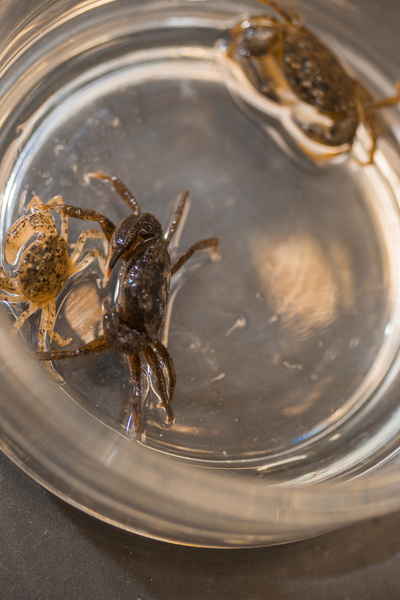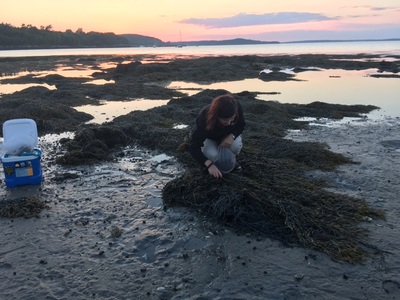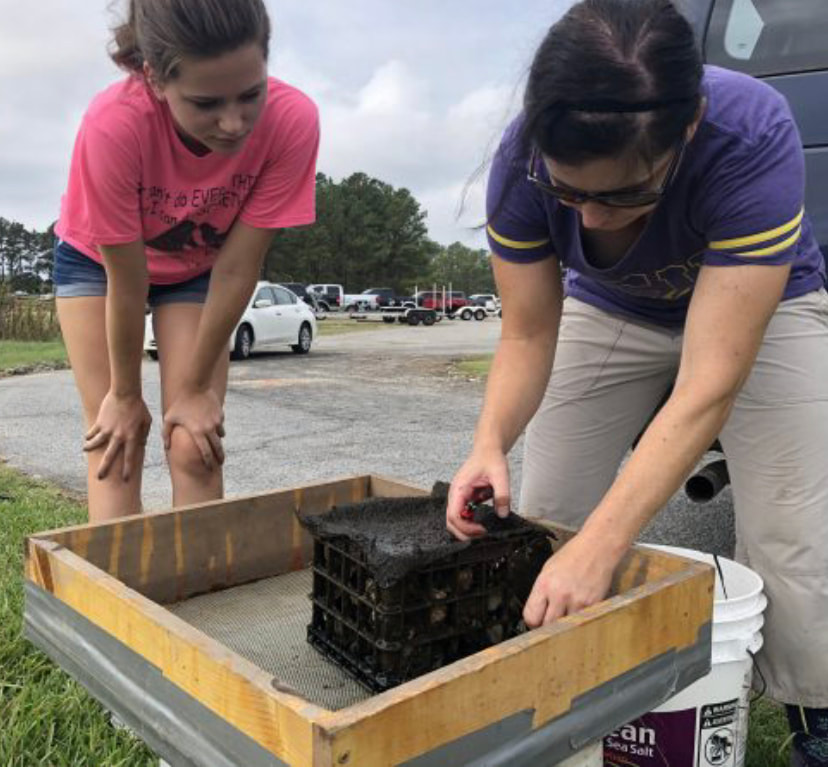Overview of Research Interests: The Blakeslee lab emphasizes marine and estuarine conservation biology and includes a diverse research program involving biodiversity, population genetics, parasite ecology, and biogeography—as well as the unique and integrative insight that can be gained from studying biological invasions. Recently, biological invasions have become recognized as a major contributor to the global (and often disjunct) distributions of many marine and estuarine species as a result of human transport mechanisms. Invasion research is therefore important not only from a conservation perspective but can provide theoretical and practical understanding of population and community level influences of novel species, and can also serve as an important teaching tool for students and the general public. Biological invasions are a major part of human-induced global change, including population, community, and ecosystem-level shifts in marine biota, genetics, and the environment.
In my lab, we examine many questions in the conservation sciences in marine and estuarine systems, focusing in five major areas: (1) global distribution patterns, biogeography, and phylogeography of free-living, and parasite species; (2) host-parasite interactions (including behavior), coevolutionary history, and parasite ecology; (3) species invasion histories and vectors, (4) population genetics, population ecology, and evolutionary ecology in native and non-native populations, and (5) biodiversity and community ecology. We focus our studies primarily on marine invertebrates as they have contributed vast numbers of introductions globally, and they also serve as hosts to parasites, which are a fundamental but often overlooked component of many ecosystems, and which can become cryptic invaders themselves. Below, I briefly expand upon each of these areas and provide link to publications related to all these areas.
In my lab, we examine many questions in the conservation sciences in marine and estuarine systems, focusing in five major areas: (1) global distribution patterns, biogeography, and phylogeography of free-living, and parasite species; (2) host-parasite interactions (including behavior), coevolutionary history, and parasite ecology; (3) species invasion histories and vectors, (4) population genetics, population ecology, and evolutionary ecology in native and non-native populations, and (5) biodiversity and community ecology. We focus our studies primarily on marine invertebrates as they have contributed vast numbers of introductions globally, and they also serve as hosts to parasites, which are a fundamental but often overlooked component of many ecosystems, and which can become cryptic invaders themselves. Below, I briefly expand upon each of these areas and provide link to publications related to all these areas.
(1) Global Distribution Patterns, Biogeography, and Phylogeography: Due to centuries of human-mediated dispersal superimposed upon millions of years of natural dispersal, many organisms have complex biogeographic patterns. Species may clearly occupy natural ranges, be introduced to new regions, or have ambiguous (cryptogenic) histories. Distinguishing among them can be challenging, requiring multiple lines of evidence. Moreover, humans may illegally move species that are under conservation protections. Research in our lab has employed genetics, demographics, and parasites as tools to better understand biogeographic and phylogeographic patterns of species with natural, ambiguous, or non-native ecological histories.
See our publication list for more information on these types of projects: http://www.blakesleelab.com/publications.html
See our publication list for more information on these types of projects: http://www.blakesleelab.com/publications.html
(2) Host-parasite interactions: Although parasites make up a large proportion of species abundance in many systems, they are often overlooked as a major contributor to population and community level dynamics. My lab is interested in better understanding the ecological, evolutionary, and environmental influences of both free-living species and parasites in native and introduced communities. We are also interested in host-parasite interactions across their distributions.
See our publication list for more information on these types of projects: http://www.blakesleelab.com/publications.html
See our publication list for more information on these types of projects: http://www.blakesleelab.com/publications.html
(3) Invasion Histories and Vectors: Not only have we investigated marine invasions from a biogeographic perspective, but we are also interested in understanding invasion histories and the mechanisms leading to species invasions. This has lead to multiple international collaborations, investigating species invasions around the world, including Asia, Europe, Africa, and South America.
See our publication list for more information on these types of projects: http://www.blakesleelab.com/publications.html
See our publication list for more information on these types of projects: http://www.blakesleelab.com/publications.html
(4) Population Genetics, Population Ecology, Evolutionary Ecology: Population genetics can be used as a tool to understand invasions, but also to reveal potential impact of an invader in novel regions. My lab has explored population genetics of invading hosts and parasites in several temperate systems. We have also investigated demographic patterns associated with marine and estuarine organisms, often associated with species invasions. Invasions can also influence the evolutionary ecology of a host organism and have population and community-wide influences.
See our publication list for more information on these types of projects: http://www.blakesleelab.com/publications.html
See our publication list for more information on these types of projects: http://www.blakesleelab.com/publications.html
(5) Biodiversity and Community Ecology: Our lab is also interested in fundamental and applied questions around biodiversity and community ecology. For example, we are interested in how trophically transmitting parasites can be valuable bioindicators of habitat quality, in terms of pollution, shoreline development, and restoration.
See our publication list for more information on these types of projects: http://www.blakesleelab.com/publications.html
See our publication list for more information on these types of projects: http://www.blakesleelab.com/publications.html
